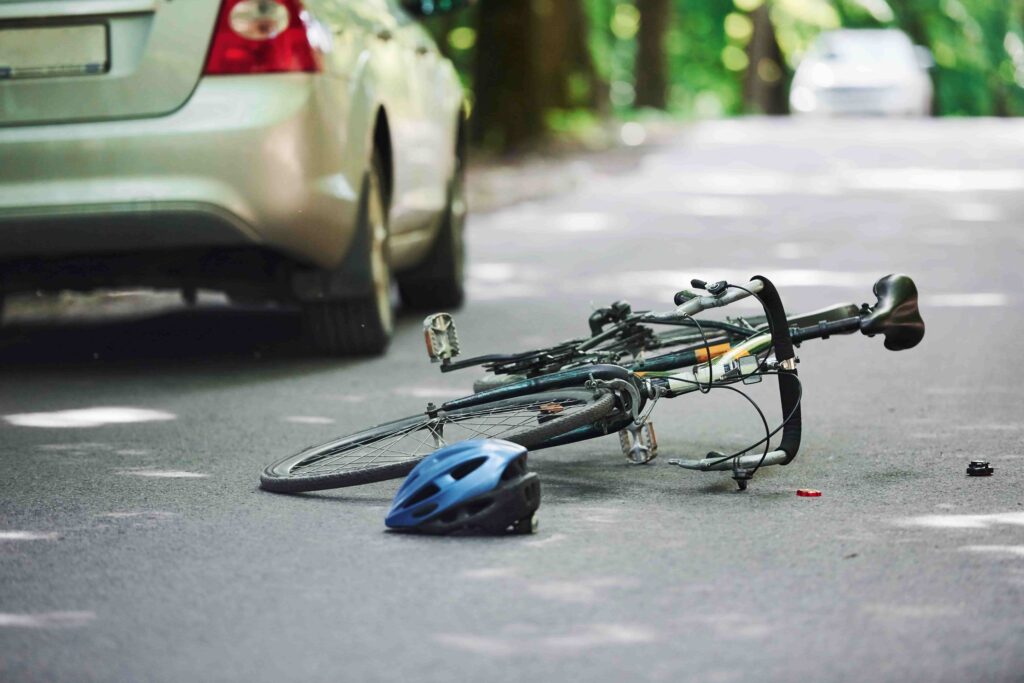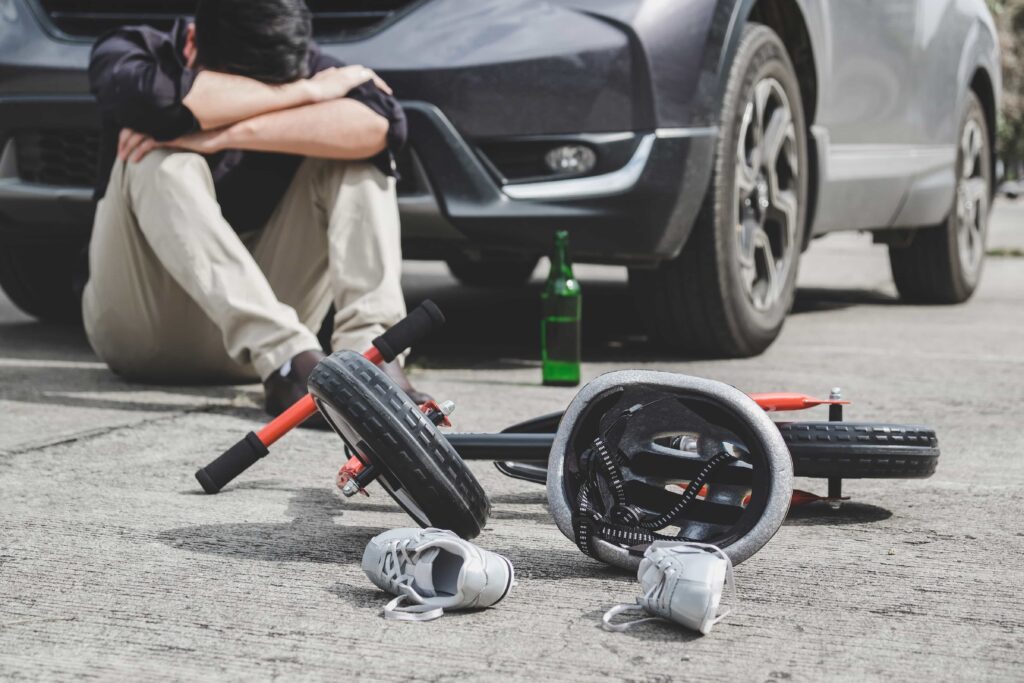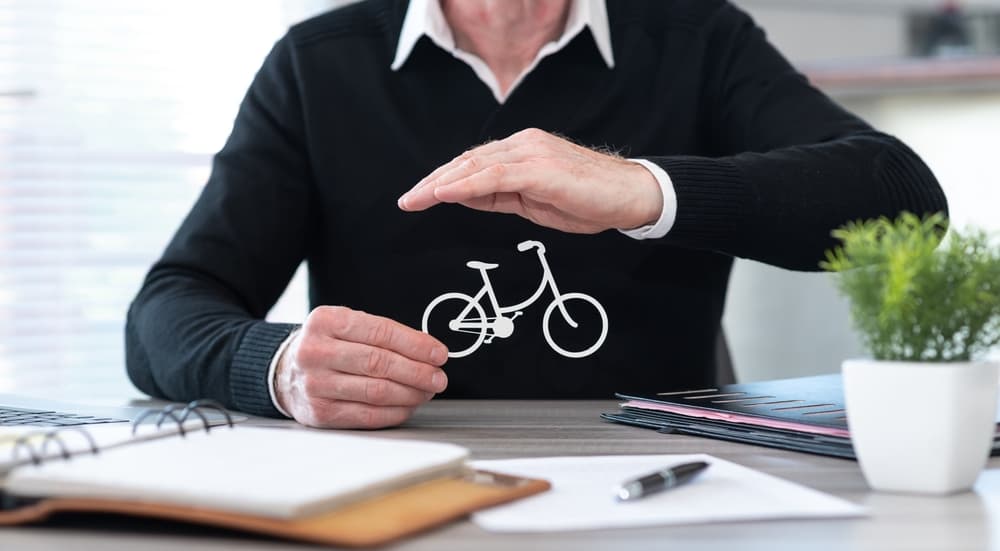After a bike accident, cyclists often find themselves concerned about who will pay for the repair costs of their bike. Many cyclists use their bikes for daily activities, and the inability to use them while being repaired can disrupt their routine and mobility. In most cases, the at-fault driver’s insurance policy will cover the cost of the bike repairs.
However, this is not set in stone because it depends on the circumstances of the crash. It is not uncommon for people to resort to their collision coverage to pay for the damages. Because these situations can quickly become complicated, enlisting a bike accident lawyer lets you manage the claims process, protect your rights, and secure compensation for repairing your bike.
Key Takeaways
- At-fault driver’s insurance usually covers bike repairs, but proving negligence is key.
- Your own auto insurance may apply if you have collision or uninsured/underinsured motorist coverage.
- Other liable parties can include cities (road hazards), manufacturers (defects), or negligent pedestrians/cyclists.
- Documentation matters: crash reports, photos, repair estimates, and receipts all strengthen your claim.
- Claim value depends on repair vs. market value—insurers may declare a total loss if repairs exceed worth.
- A lawyer can protect your rights and maximize compensation by handling insurers and disputes.
Types of Bike Accidents

Different types categorize bicycle crashes, and the type of collision often influences who holds liability and how damages are calculated. Understanding the different categories helps clarify what evidence may be needed and the parties may be involved.
- Vehicle-Bicycle Collisions: These are among the most common and frequently the most serious. They occur when a motor vehicle hits a cyclist at an intersection, during a lane change, or while turning. The fault usually depends on whether the driver or cyclist violated traffic rules.
- Dooring Accidents: A dooring accident happens when a driver or passenger opens a car door into a cyclist’s path. These crashes happen in urban areas, and the person opening the door usually holds fault because they must check for oncoming traffic first.
- Right Hook and Left Cross Crashes: A right hook happens when a car turns right in front of a cyclist who is going the same way, cutting off the cyclist. A left cross occurs when a car turns across the cyclist’s path. Both accidents usually stem from a driver’s failure to yield.
- Hit-and-run accidents: In these cases, the driver leaves the scene before providing identification or insurance information. Cyclists may still have recovery options, such as initiating an uninsured motorist claim.
- Single-Bike Accidents Due to Road Hazards: Not all bike crashes involve another vehicle. Poor road maintenance can cause serious accidents involving bikes. In these cases, the government agency assigned to maintain the road may be liable if it fails to address obvious hazards.
Every type of accident has legal considerations, making it essential to understand the specifics involved. It is advisable to prioritize proper documentation and initiate an early investigation to safeguard your right to compensation.
What Causes Bike Accidents
Knowing what caused your bike accident is just as important as knowing the type of accident you were involved in. The underlying cause of a bicycle accident plays a major role in determining liability and the direction of a claim. Many crashes are preventable and stem from negligence.
Here are the common causes of bike crashes:
Driver Negligence
When a driver’s careless actions lead to a collision, they are usually responsible for covering your damages. Driver negligence may include
- Distracted behavior, such as texting and driving
- Ignoring yield signs or failing to check for cyclists at intersections and driveways
- Swerving into bike lanes without looking or signaling improperly
- Excessive speed
- Drunk impaired driving
Poor Road Conditions
Road hazards are another frequent cause of bike accidents, such as:
- Potholes and cracks in unmaintained streets
- Debris such as gravel, glass, or loose objects on the road
- Lack of bike lanes, which can force cyclists into dangerous proximity with cars
- Inadequate street lighting, which may make it harder for both drivers and cyclists to see and avoid hazards
In these cases, a public entity responsible for road maintenance may be held responsible if it knows about the condition and fails to fix it within a reasonable time.
Defective Bike Equipment or Parts
Sometimes, the bike itself causes the accident due to:
- Manufacturing Defects: Faulty frames, tires, brakes, or handlebars can fail during use.
- Improper Repairs: A repair shop’s mistakes can leave a bike unsafe.
- Design Flaws: Poorly designed parts or bikes that don’t meet safety standards can contribute to crashes.
If your bike is damaged by defects, you may sue the manufacturer, retailer, or repair technician under product liability laws.
Pedestrian Actions
Pedestrians can also be responsible for causing bike accidents in the following scenarios:
- A pedestrian entering a bike lane without checking for traffic
- Pedestrians using phones or headphones may not notice oncoming cyclists
- Violating a crosswalk signal, such as jaywalking or ignoring walk signals
The pedestrian may be wholly or partially responsible for your damages, depending on the situation. Your bike accident lawyer can assist in investigating the cause, gathering evidence, and identifying the responsible parties to maximize your potential recovery.
Determining Fault in an Accident

Negligence primarily determines fault in a bike collision. This means you must prove that another person failed to act reasonably safely and that this failure led to the crash. In legal terms, the at-fault party is usually the one who violated a duty of care. Determining fault is key because it directly affects whether you can recover the cost of repairs and other damages and how much compensation you may receive.
Evidence is key when determining liability. The courts and insurers may review photographs of the accident scene, damage to the bicycle, skid marks, traffic signals, and the surrounding environment to help establish what happened. They can also engage eyewitnesses to confirm the occurrence of events. If law enforcement responded to the crash, their report may include preliminary conclusions about who was at fault and any citations issued at the scene.
Traffic law violations often serve as the basis for assigning responsibility. For example, if a driver fails to yield to a cyclist in a bike lane or makes an illegal turn, those actions can indicate negligence. However, cyclists must also obey traffic laws. If riders run a red light or suddenly maneuver into traffic, they can share some blame. In states that assign fault proportionally, the injured cyclist can still recover damages despite some responsibility. You just need a bike accident attorney to ensure you receive full compensation and that fault-sharing laws don’t work against you.
In bike-related crashes, the following can bear responsibility for paying for the repairs of your bike:
- The At-Fault Driver’s Insurance: If a motor vehicle driver caused your bike accident, their auto insurance policy will address the cost of bike repairs under their property damage liability coverage. This applies when the driver was clearly at fault, and you can prove that the other driver’s negligence caused the damage. In this case, you will initiate a claim with the at-fault driver's insurer to seek payment for your bike repairs.
- Your Own Auto Insurance Policy: Surprisingly, your car insurance policy may cover damage to your bike. You may use your Uninsured/Underinsured Motorist Property Damage (UMPD) Coverage if the party who hit you has no insurance. In rare cases, your auto insurance may cover bike damage if your policy includes collision coverage that extends to bicycles.
- A Third Party: Other potentially responsible parties can include the City or Municipality. If poor road conditions cause your accident, the local government might be liable for repairs. Product liability laws may also require a bike manufacturer or repair shop to cover repair costs if a defective part or negligent repair caused the crash.
- A Pedestrian or Another Cyclist: If your crash was caused by another cyclist or pedestrian behaving negligently, they may be personally responsible for your bike repairs. However, unless they have personal liability insurance, you may need to initiate a lawsuit to successfully collect payment from them.
Understanding the various individuals or entities that are liable for the expenses of your bike repairs is important. Your bike accident attorney will thoroughly investigate all potential avenues for recouping the costs of fixing your damaged bike, ensuring you don't have to pay out of pocket.
Filing a Property Damage Claim
Filing a property damage claim after a bicycle accident involves several important steps to document the damage, identify responsible parties, and formally notify the appropriate insurance company. Proper documentation and prompt action help preserve your rights and increase the likelihood of a fair payout. Here are the steps to take:
- Get Copies of the Police or Crash Report: If the police responded to the accident, request a copy of the official report. This document may include helpful details such as the names of the involved parties, insurance information, and the officer’s observations regarding the fault. Insurance companies often use this report to assess the value of your claims.
- Identify the Insurance Company: Determine which insurance company will handle the claim. If the driver was at fault, use the information from the crash report to locate their auto insurer. If the driver was uninsured or ran from the scene, check whether your insurance may provide coverage under uninsured motorist policy.
- Take Photos of Your Bike: Document all visible damage to your bicycle immediately after the accident. Take multiple high-resolution photos from different angles, including close-ups of damaged components. If you have pre-accident images, those can help establish the bike’s original condition and value.
- Get Repair Estimates: Obtain written repair estimates from a reputable bike shop. If the cost of repairs is close to or exceeds the bike's value, the insurer may treat the bike as a total loss and pay you its market value instead. Having more than one estimate strengthens your case for the claimed value.
- Document Additional Damages: Keep records of any other property damaged in the crash, such as a helmet, clothing, or electronic devices. Include receipts or proof of purchase if possible. These items comprise part of your claim, and failing to document them early may limit your potential recovery.
- Call the Insurer: Once you’ve gathered the necessary documentation, contact the insurance company and initiate the claim. Be prepared to provide the accident report, photos, estimates, and a written description of the incident. The insurer will engage a claims adjuster to review the case and may request further information or inspection of the bike.
Following these steps builds strong evidence for your claim and protects your right to compensation for your losses. A bike accident lawyer can guide you through the process to avoid missteps. They can also handle all correspondence with insurers to prevent lowball offers or unfair claim denials. If disputes arise, the lawyer can take legal action to resolve your claim properly.
How Much Is My Bike Damage Claim Worth?

The value of your bicycle damage claim depends on several factors, including the cost of repairs, the current market value of your bike, and any additional property damaged in the accident. Insurers evaluate these elements to determine whether to approve a repair, declare the bike a total loss, or offer a settlement.
The starting point is the repair estimate. If a qualified bike shop can fix the damage for a reasonable cost, the insurer will typically approve payment for the repairs. However, if the cost to repair the bike approaches or exceeds its cash value, the insurer may declare it totaled and instead offer compensation equal to the bicycle accident worth just before the crash. This valuation considers brand, model, year, condition, and current resale prices—not the original purchase price.
In addition to the bicycle, your claim may include accessories and personal property damaged in the incident, such as a helmet, bike lights, panniers, GPS devices, or protective gear. You’ll need receipts, photos, or other documentation to recover these items and establish their pre-accident condition and value. Working with a bike accident attorney gives you the advantage of legal strategy, informed negotiation, and the ability to secure fair compensation without unnecessary delays.
Get Compensation For Your Bike Repairs
If an accident damages your bicycle, you can claim financial compensation for the repairs. However, figuring out who pays for your repairs is not easy. A bike accident lawyer can help determine who should pay the damages and protect your right to fair compensation. They will help determine the bike repair costs to ensure your claim seeks adequate compensation. Contact your lawyer for consultation and learn how to seek justice.